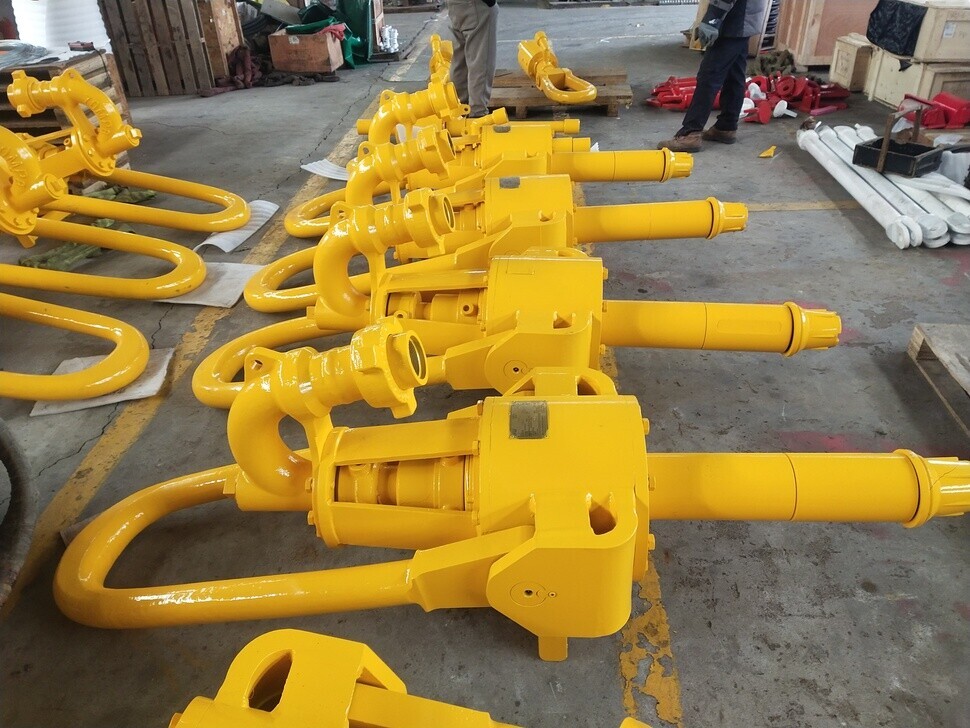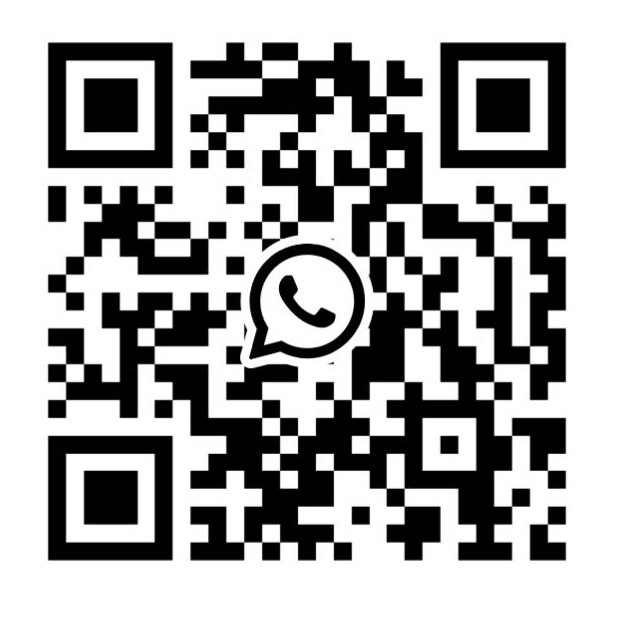Rotary Swivel: The Core Hub of Oil Drilling
Feb 14, 2025
The oil drilling rotary swivel is a key piece of equipment in oil, gas and other drilling operations. Today, let's learn about the rotary swivel together.
Ⅰ.Working Principle
During the drilling process, the swivel is suspended on the traveling block and connected to it through the bail. The winch pulls the traveling block through the wire rope, thus driving the swivel to move up and down. The power equipment (such as the rotary table or top-drive) drives the drill string to rotate, and the central tube of the swivel rotates accordingly, enabling the drill string to carry out rotary drilling. At the same time, the drilling fluid is pumped out from the surface mud pump, enters the central tube through the gooseneck tube, and then flows to the bit through the inside of the drill string, cooling and lubricating the bit and carrying the cuttings to the surface.
Ⅱ.Main Functions
Torque Transmission: In cooperation with the rotary table or top-drive, it transmits power to the drill string, allowing the bit to rotate and break the rock.
Load-Bearing: It suspends the rotating drill string, bears most or even all of the weight of the drill string, provides upper bearing support for it, and at the same time bears various axial and radial loads generated during the drilling process to ensure the stability of the drilling operation.
Drilling Fluid Conveyance: As a passage for the drilling fluid, it introduces high-pressure drilling fluid into the rotating drill string, conveys the drilling fluid prepared on the surface to the wellbore, and plays roles such as cooling the bit, carrying cuttings, and stabilizing the wellbore.
Ⅲ.Requirements for the Swivel
Strength and Rigidity of Load-Bearing Parts: All load-bearing parts need to have sufficient strength and rigidity to bear the entire weight of the drill string and various axial and radial loads generated during the drilling process. For example, for a well several kilometers deep, the weight of the drill string can reach hundreds of tons. The load-bearing components of the swivel, such as the bail and main bearings, need to be reasonably designed and made of excellent materials to meet the load-bearing requirements.
Reliable Sealing System: The high-pressure drilling fluid sealing system must work reliably, have a long service life, and be quickly and conveniently replaced to prevent the leakage of drilling fluid and the entry of external impurities.
Good Rotation Performance: It should ensure that the drill string can rotate flexibly and stably, with a low friction coefficient and high rotation accuracy. High-quality bearings and a reasonable structural design are the keys to achieving good rotation performance.
Good Oil Sealing: The oil seal should be in good condition and be able to automatically compensate for the wear of the sealing elements during the working process.
Ⅳ.Composition and Structural Features
The swivel generally consists of the following three parts:
Load - Bearing SystemIt includes the central tube and its joints, the housing, the trunnions, the lifting bail, and the main bearings, etc.
1.Central Tube: As a passage for the drilling fluid, its internal space allows the drilling fluid to flow smoothly from the surface to the bit. The central tube needs to have good wear - resistance and corrosion - resistance to withstand the long - term scouring and erosion of the drilling fluid.
2.Lifting Bail: It is used to suspend the swivel. By connecting with the traveling block, the swivel can move up and down with the traveling block, thus realizing the tripping operation of the drill string. The bail needs to have sufficient strength to bear the weight of the drill string and various loads generated during the drilling process.
3.Main Bearings: They support the rotation of the central tube, enabling the drill string to rotate flexibly. The main bearings need to have characteristics such as high load-bearing capacity, low friction coefficient, and long service life to ensure stable operation during long-term drilling operations.The weight of the drill string is transmitted to the hook through the kelly, the central tube, the main bearings, the housing, the trunnions, and the bail.
Drilling Fluid SystemIt includes the gooseneck tube and the drilling fluid washpipe assembly.
1.Gooseneck Tube: It connects the surface drilling fluid circulation system and the central tube. Its shape is usually gooseneck-like, which is convenient for the introduction of the drilling fluid and, to a certain extent, alleviates the impact force when the drilling fluid flows.
2.Washpipe Assembly: It is installed outside the central tube and plays a sealing role to prevent the drilling fluid from leaking from the gap between the central tube and the swivel housing. The washpipe assembly usually consists of a washpipe, sealing elements, etc. The performance of the sealing elements directly affects the sealing effect of the swivel.High-pressure drilling fluid flows into the rotating central tube through the gooseneck tube and the washpipe and reaches the inside of the drill string. Drilling fluid sealing devices are installed at the upper and lower parts of the washpipe to prevent the leakage of high-pressure drilling fluid.
Auxiliary SystemIt includes the centralizing bearings, anti-jump bearings, and oil seal devices.The inner cavity of the housing forms an oil sump to lubricate the main bearings, centralizing bearings, and anti-jump bearings.The upper and lower oil seal boxes are mainly used to prevent the drilling fluid, oil, and water from leaking into the oil sump and the leakage of oil, to ensure the normal operation of each bearing.The upper and lower centralizing bearings radially position the central tube to ensure its stable operation with small swing, to improve the working conditions of the drilling fluid and oil seals and extend their service life.The anti-jump bearings are used to bear the impact and vibration transmitted by the drill string during the drilling process and prevent the axial movement of the central tube.
Ⅴ.Maintenance and Upkeep of the Drilling Swivel
Daily Inspection
1.Appearance Inspection: Check the appearance of the swivel daily to see if there are obvious signs of wear, cracks, deformation, or leakage. Pay special attention to key parts such as the gooseneck tube, central tube, and bail, as well as the sealing conditions of all connection parts.
2.Connection Parts Inspection: Check whether all connection bolts and nuts are loose to ensure that the connection between the bail and the traveling block, the connection between the gooseneck tube and the drilling fluid manifold, and the connection between the central tube and the drill string are firm and reliable. Loose connections may lead to leakage or equipment failure.
3.Drilling Fluid Passage Inspection: Observe the flow of the drilling fluid to ensure that the drilling fluid passage is unobstructed. Check for any blockages or abnormal pressure fluctuations. If there are any abnormalities, clean or investigate the cause in a timely manner.
Lubrication Maintenance
1.Bearing Lubrication: Regularly lubricate the rotating parts of the swivel, such as the main bearings and auxiliary bearings. Use the appropriate lubricant according to the recommendations of the equipment manufacturer and control the amount of lubricant. Over-lubrication may lead to seal failure, while insufficient lubrication will accelerate bearing wear. Generally, set a reasonable lubrication cycle according to the operating environment and usage frequency, such as lubricating after a certain number of working hours or after completing a certain amount of drilling footage.
2.Sealing Element Lubrication: For sealing elements, such as the washpipe seals, proper lubrication is also required to reduce friction and wear and improve the sealing performance. Use a special seal lubricant and apply it according to the specified method and frequency.
Maintenance of Rotating Parts
1.Bearing Inspection and Maintenance: In addition to lubrication, regularly check the operating conditions of the bearings, such as whether there are abnormal noises, vibrations, or heat-generation phenomena. If problems are found with the bearings, repair or replace them in a timely manner. Tools such as vibration monitors and temperature sensors can be used to monitor the bearings to detect potential problems at an early stage.
2.Central Tube Rotation Inspection: Ensure that the central tube can rotate flexibly without jamming. Check whether the fit clearance between the central tube and other components is normal. If there are any abnormalities, adjust or repair them in a timely manner.
Regular Maintenance and Repair
1.Maintenance Plan Formulation: Formulate a detailed maintenance plan according to the recommendations of the equipment manufacturer and the actual usage situation, including regular comprehensive inspections, maintenance, and repair work. Carry out maintenance according to the plan to ensure that the equipment is always in good operating condition.
2.Professional Repair: For complex faults or repair work, it should be operated by professional repair personnel. The repair personnel should have relevant knowledge and skills, be familiar with the structure and working principle of the swivel, and use appropriate tools and equipment for repair to ensure the repair quality.
Ⅵ.Common Faults and Troubleshooting Methods of the Drilling Swivel
Leakage of Mud at the Connection between the Gooseneck Tube and the Swivel Flange or the Union of the Water Hose
Deterioration or Damage of the Short-shaped Rubber Gasket: Replace the short-shaped rubber gasket.
Rust or Damage of the Sealing Surfaces: Clean, derust, or weld - repair each sealing surface.
High Temperature and Short Service Life of the Washpipe Lower Packing Box Assembly during Operation
Blockage of the Lubricating Oil Nozzle, Inability to Inject Lubricating Grease: Disassemble and clean the blockage of the oil nozzle or replace the parts.
Too Tight Fit between the Packing Lip and the Washpipe Sealing Surface
Over-tightening of the Lower Packing Cap: Loosen it and then appropriately adjust the tightness of the lower cap.
Too Small Inner Diameter of the Packing Lip or Too Large Outer Diameter of the Washpipe: Select the appropriate washpipe and packing for assembly.
Unsmooth Swing of the Bail or Loose Fit with the Pin
Rust or Foreign Matter in the Pin and the Bail Hole: Clean, derust, remove the foreign matter, and then inject lubricating grease.
Serious Wear of the Pin and the Hole due to Lack of Oil
Blockage of the Oil Nozzle: Clean the oil nozzle.
Wear of the Pin: Replace the pin.
Overheating of the Swivel Housing, Temperature Exceeding 60℃
Lack of Lubricating Oil: Add oil to the oil level gauge scale.
Excessive Oil Addition: Open the plug to drain the oil to the oil level gauge scale.
Entry of Mud and Other Impurities into the Lubricating Oil: Disassemble the oil drain plug, drain all the oil, clean the housing, and add new oil to the oil level gauge scale.
Serious Oil Leakage from the Lower Oil Packing Box during Operation, No Oil in the Housing:Disassemble and inspect to replace the worn-out oil seal sleeves, oil seals, packing and other sealing parts.
Read More





 Language :
Language : English
English Русский
Русский عربي
عربي
 GET A QUOTE
GET A QUOTE



 IPv6 network supported
IPv6 network supported